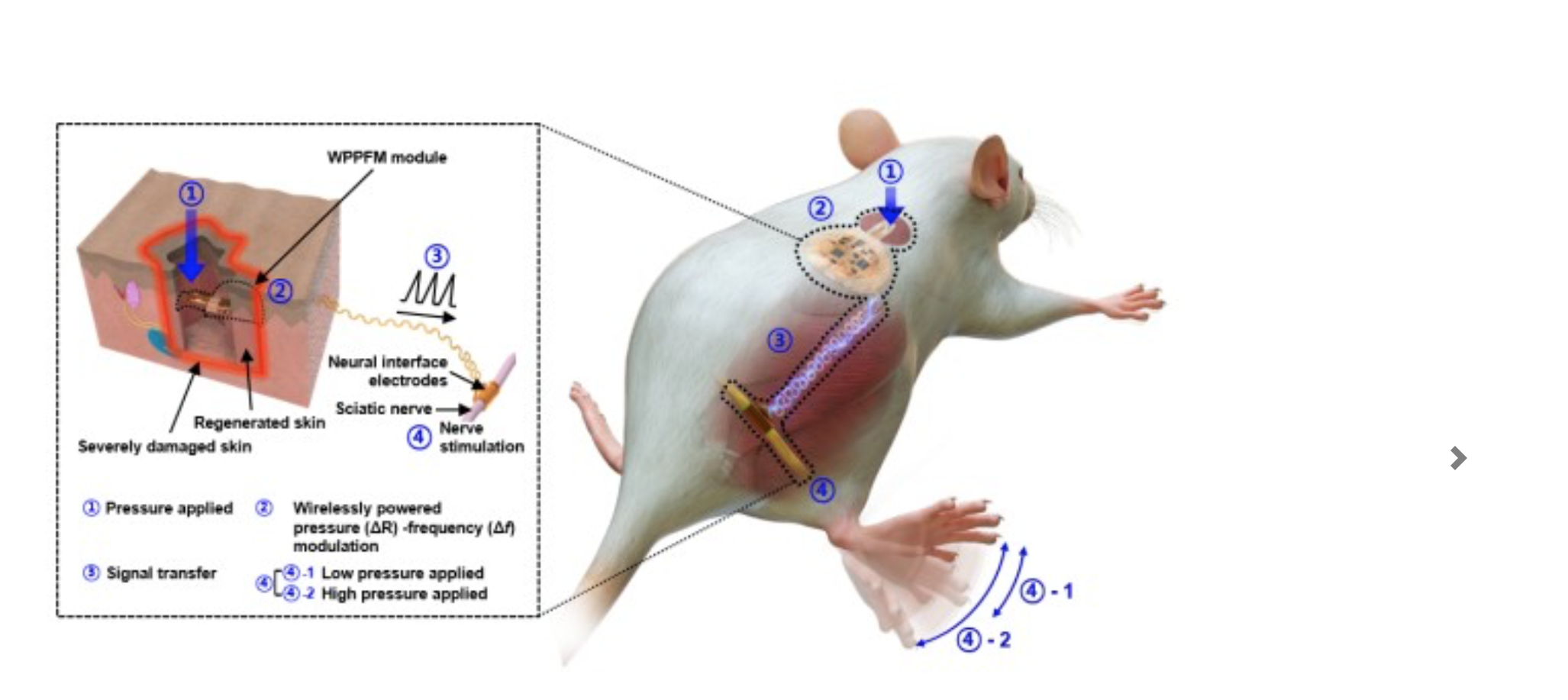Creating a New Generation of Artificial Skin Capable of Regeneration and Sensation Transmission
When someone gets a serious skin injury, like bad burns, certain skin conditions, or injuries from accidents, it can mess up the nerves in the skin. This means they might not be able to feel things properly, which is not only a huge deal for staying safe and healthy but also can be really tough mentally and physically. If the injury is too big for the body to fix on its own, doctors might need to step in and add some artificial skin to cover up the damaged spot. Up until now, the main goal of this fake skin has been to help new, real skin grow back and provide a similar setup to what our body’s skin would naturally have. However, one big piece that’s been missing is getting the feeling back in these areas.
Recently, scientists have made a groundbreaking leap in artificial skin technology. Spearheaded by Dr. Youngmee Jung at the Centre for Biomaterials and Dr. Hyunjung Yi from the Post-Silicon Semiconductor Institute, this team comes from the Korea Institute of Science and Technology. They’ve teamed up with Prof. Ki Jun Yu from Yonsei University and Prof. Tae-il Kim from Sungkyunkwan University to craft something pretty incredible. They’ve developed what’s known as smart bionic artificial skin, which goes way beyond just helping skin heal. This new kind of skin can actually bring back feeling to areas that were previously numb due to permanent damage. It’s made possible by combining body-friendly materials with a system that delivers touch sensations, all powered by some clever electronic devices.
The innovative artificial skin created by the research team is essentially a smart hydrogel that mimics real skin. It’s crafted from collagen and fibrin, which are the key building blocks of our skin, giving it elasticity and the ability to connect tissues. This artificial skin is designed to be super sensitive, thanks to special tactile sensors that can pick up even the slightest changes in pressure. When these changes are detected, the skin uses a system called wireless-powered pressure-frequency modulation (WPPFM) to turn those changes into electrical signals. These signals are then sent directly to the nerves through electrodes, allowing the artificial skin to function just like our own, including the sense of touch. Furthermore, the presence of collagen and fibrin helps in the healing process by encouraging the growth and development of skin cells around the injured area, aiding in the regeneration of natural skin.
The research team went a step further and put this cutting-edge artificial skin to the test. They implanted it onto rats that had serious skin injuries to see if it would help. The results were pretty impressive. Two weeks after the skin was put in place, the rats showed over 120% improvement in healing compared to those that didn’t get this special treatment. This wasn’t all about healing up faster, though; the artificial skin was also smart enough to sense pressure changes—between 10 and 40 kPa, to be precise. That’s roughly the same kind of pressure our own fingertips can feel. Based on these changes, the skin adjusted its electrical feedback, effectively changing how the rats reacted. This shows it’s pretty spot-on at mimicking natural skin’s ability to feel and respond to touch.
The latest advancements in artificial skin from this research team are seriously game-changing, especially for folks dealing with deep skin injuries. This new-tech skin is pretty unique because it’s slapped right onto the damaged area, nestling itself snugly among the nerves just below the skin’s surface. What’s cool is, after the new skin has done its magic and the area’s started to heal, especially in cases where nerves were damaged, the built-in sensors in the skin get to work right in that under-the-skin layer. This isn’t just a minor upgrade; it’s a major boost to how people can manage on their own, making everyday tasks way less of a hassle. And here’s a kicker: for older adults who might be seeing their sense of touch fade away, this tech could be a lifeline. By inserting these super-smart electronic sensors deep under the skin, using some top-notch tech, it’s possible to bring back those fading sensations. It’s like giving the skin a thorough rejuvenation, which, if you ask me, sounds pretty promising for a lot of people out there.
Dr. Youngmee Jung of KIST, said “This research is the result of convergence research on devices, materials, and regenerative medicine that effectively combines biomaterials and electronic device technology. We plan to conduct additional clinical trials in collaboration with medical institutions and companies for commercialization, and we also plan to expand our research to reconstruct various functions of skin tissue such as temperature, vibration, and pain.”
In wrapping up, the strides made in developing this next-level artificial skin are nothing short of revolutionary. Imagine a future where accidents or conditions that once led to lifelong impairment could be mitigated, not just cosmetically, but in a way that genuinely restores function. This isn’t just about patching up; it’s about bringing back a piece of normalcy to those affected. Through the diligent work of Dr. Jung and team, this isn’t just a hopeful dream but a tangible reality on the horizon. The implications are vast, not only for individual healing but for how we understand and integrate the merging paths of biology and technology. What we’re seeing is the beginning of a new era in medical science, one where the term ‘skin deep’ takes on a whole new meaning.

